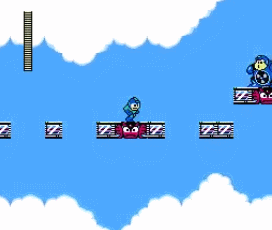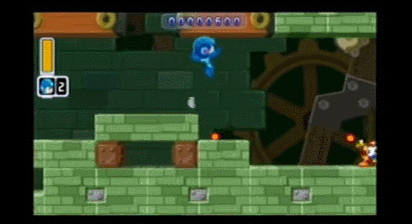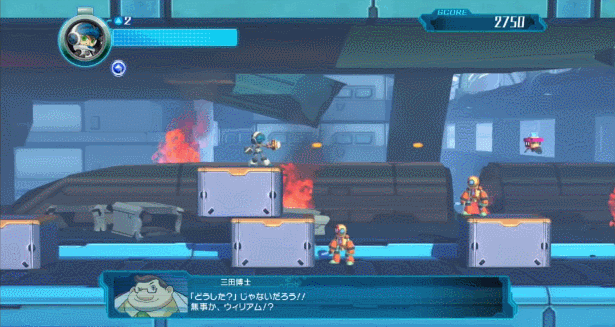 POV: DESIGNER. DIFFICULTY 2. LEVEL 5 – 1
POV: DESIGNER. DIFFICULTY 2. LEVEL 5 – 1
Mike: This Vlambeer series has shown us how we can develop a critical metric from conception to application. It required us to go chin-deep in the details of over a dozen games. What has this effort taught you about the process of digging into the details of games?
Richard: One thing that I like about the Vlambeer Scale of Quality is that it’s a series of 31 questions, most of which are easy to answer. You don’t have to be a game designer to recognize if a game has screen shake or faster enemies. These are the kind of details that are relevant to players. Does the game have camera lerp, on the other hand, is a question that the average gamer might have to research before answering. Marcus, what were some of the trickiest Vlambeer Scale questions to answer?
Marcus: Creating a distinction between very similar questions was the trickiest thing in creating the scale. There are essentially two entries named “more enemies”. Listening to the original talk closely, I finally settled on making one entry a question about the density of enemies and the other about level progression (do more enemies show up later to provide additional challenge).
Richard: Ah. Good point. I think I had to think carefully about the 3 questions of permanence (#12, 21, 30). It’s pretty helpful that you added helper text for each question. Sometimes when working with the Vlambeer Scale I got the feeling that I was struggling to find a fitting example for the category. I had to make a judgement call of how many enemies qualified for “more enemies.” The whole experience of scoring a game is a great mental exercise that got me thinking in very specific ways about very specific parts of games.
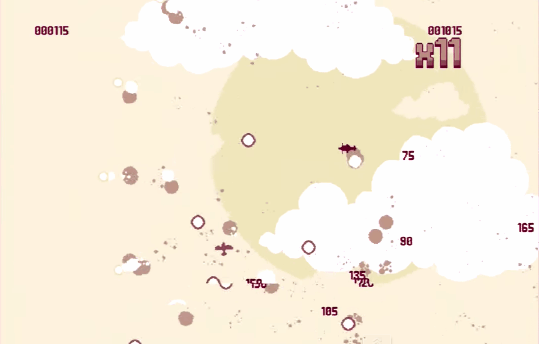 Hold my Vlambeer while I transport this nuke.
Hold my Vlambeer while I transport this nuke.
Marcus: At first I was worried about making some of the questions more abstract so that games without guns for example could have a chance of scoring points on the more gun-specific questions. My thinking was “I know this game has good game feel. It can’t score so low!” But then I realized the distinction between game feel and Vlambeer game feel.
Richard: Yup. The scale is a system of measuring the Vlambeericality of games. We have to score a game fairly first, and then compare the results to what we think the score should be. When we started this series, we got feedback from some who were confident that the scale was useless. They argued that the scale isn’t universal and that it doesn’t apply to all kinds of games. They didn’t understand that the limitation of the scale is the reason why it’s good. It’s neat to consider that there’s some universal theory of game design that can be applied to all games, but that’s not what we’re going for with the Vlambeer Scale: it’s an organized way of seeing how other games measure up to one company’s unique style.
Marcus: That’s right. Game feel is such a nebulous term anyway. It’s mostly used as a offhanded way to talk about a game after there is nothing left to say. To actually start out with game feel as a way to say something about a game before anything else is a small triumph I think. Doing so means we can have a design conversation and zoom in to the details immediately.
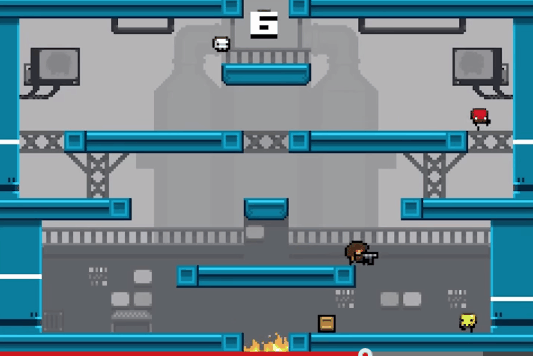 Hold my Vlambeer while I jump over this fire pit.
Hold my Vlambeer while I jump over this fire pit.
Mike: It’s important to note that the value of a measure isn’t so much about how closely it hews to some ideal objective metric of quality or inherent “goodness” of games. The process of carefully analyzing a game through a regimented approach is, in itself, extremely useful and a skill worth practicing. Analyzing game design is subject to so many subtle and not-so-subtle biases–having a set approach, even if it’s somewhat arbitrary, can help against temptations to play to the home crowd and cheerlead for a game just because it’s a classic or because you happen to like it.
It’s easy to cheerlead when you’re trying to assess something as deeply subjective and personalized as a player’s perception of game feel. The Vlambeer Scale helps us cut through some of that, even if it isn’t perfectly fair to games that, say, don’t happen to involve guns and bullets.
Richard: Game feel is a strange topic. The elements of game feel can be extremely obvious (screen shake) or incredibly subtle (milliseconds of sleep on enemy death). It’s both style and substance: an artistic technique and a collection of seemingly-arbitrary tips. We often talk about it with concrete details, yet it’s one of those “you know it when you see it” kind of topics. Because it has a large style component, many tacitly concede that achieving good game feel is at least partially luck-based or an art that cannot be taught. For all these reasons, the art of game feel is a perfect analogy to the art of game design.
“With diligence and luck, you’ve got a game that feels great.” ~ Steve Swink:
“[understanding the fundamentals] is going to be completely different for every type of game. And I’m not sure that be Shigeru Miyamoto is particularly useful advice.” ~Mark Brown.
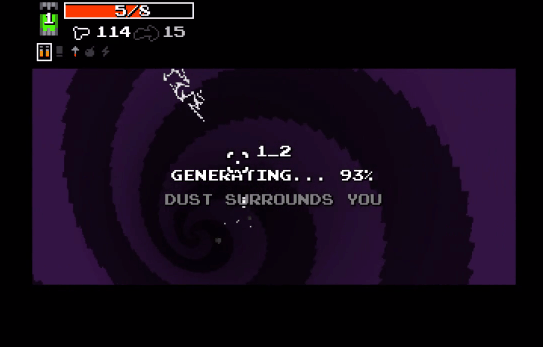 Hold my Vlambeer while I take out this basic enemy with my golden gun.
Hold my Vlambeer while I take out this basic enemy with my golden gun.
Marcus: The Vlambeer Scale of Quality : Game feel :: _________ : Game design?
Richard: Super Mario Maker : Game design? I think that answer works. Nintendo has always made my favorite platformers. But the Nintendo-Mario style is just one way to achieve greatness. It would be unproductive to compare every new platformer against the “Super Mario Bros.3 Scale”. Comparing games is a good way to highlight their differences, but eventually as critics and fans and designers, we have to be able to see how games can do things differently. So Super Mario Maker for the Nintendo Wii U may be a great way to engage in the design style of Super Mario Bros., but it isn’t meant to be an instruction book for all other types of games. For example, how does the design of Super Mario Bros. help you think about the design of strategy games, Mike?
I know that the term game feel is most commonly applied to 2D action games, but do you think the Vlambeer Scale is useful for a game like Final Fantasy Tactics (FFT)?
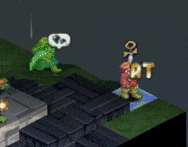
Mike: It’s tempting to say that the Vlambeer Scale is not useful at all in analyzing FFT since a turn-based tactical game is about as far as you can get from an action game. But I think the Vlambeer scale is definitely useful here. The game doesn’t need to specifically be giving the player feedback on how they’re jumping and moving and shooting in real time in order for it to have a Vlambeerian feedback system. Good game feel in a turn-based game can be the difference between a mechanical, bland-feeling experience and an exciting experience. FFT has screen shake and knockback on critical hits, animations for being hit by attacks, elaborate and exaggerated animations for powerful attacks, and dynamic camera movement to accentuate important moments. The game doesn’t score highly on the scale (for instance, there are guns but bullets don’t show up on screen at all!) but it uses many of the tips and tricks embodied by the scale to make the player connect more viscerally to what’s happening to their characters on the battlefield. For that, I’m grateful. It certainly contributes to my enjoyment of the game, as much as I’d like to claim that I can detach myself from these purely superficial details and focus on pure strategy!
Richard: FFT has critical knockback! How interesting! I’m sure we can have a whole conversation about turning off animation in games like Fire Emblem and Advance Wars, but let’s wrap up this Vlambeer game feel topic.
Even if you think that game feel is just a buzzword, the process that we modeled in this series is important. By taking the scale seriously and doing the detailed work, I know how useful the Vlambeer Scale of Quality really is. And this isn’t as simple as a “yes, the scale is great” or a “no, it’s useless.” Getting more out of games as a player, being a more diverse designer, and writing more effective critique all require me to have more cups than just “good” versus “bad.” Ideally, I’d have a cup for every kind of style, and player, and designer, and effect that games can achieve. That’s the tricky part. Understanding game design isn’t about cramming everything into 2 good/bad cups or even a 100 cups. It’s about being open and ready to create more cups as needed.
Mike: Although it’s called game feel, we can more than just feel it: we can know it’s there without actually playing the game ourselves, and it’s all because we carefully broke down a talk by a game feel master into a metric, then carefully applied it. At first I was a skeptic of the usefulness of the Vlambeer Scale, but I’ve been converted after reading what the Super Terrell Brothers have had to say. I hope we can use this style of analysis to build other metrics and turn yet more feel into knowledge.
Richard: Right! Design Oriented is about moving in a better direction, to a place where we can have better conversations about games and game design. Engaging with game design is more analogous to sightseeing than participating in a court proceeding. We’re primarily interested in exploring ideas and execution. Likewise, I like the Vlambeer cup metaphor because it reinforces the idea that with game design and the style developers express through their design, we take, sip, drink, and eventually put down the cocktails of creators. And if you try to take too many drinks at once, merging them into one giant punch bowl, you’ll miss out on the individual flavor combinations… and probably end up drunk.








 POV: DESIGN. DIFFICULTY 4. LEVEL 5 – 1
POV: DESIGN. DIFFICULTY 4. LEVEL 5 – 1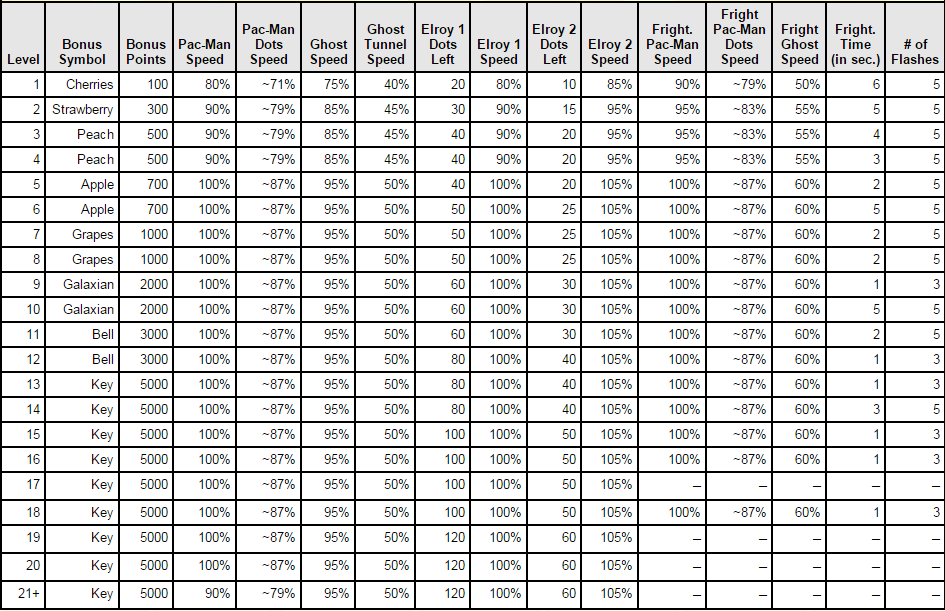








 Hold my Vlambeer while I transport this nuke.
Hold my Vlambeer while I transport this nuke. Hold my Vlambeer while I jump over this fire pit.
Hold my Vlambeer while I jump over this fire pit. Hold my Vlambeer while I take out this basic enemy with my golden gun.
Hold my Vlambeer while I take out this basic enemy with my golden gun.


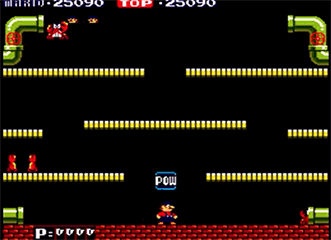
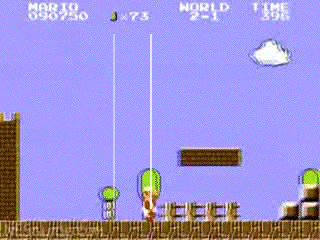 Gif from Scroll Back by Itay Keren
Gif from Scroll Back by Itay Keren